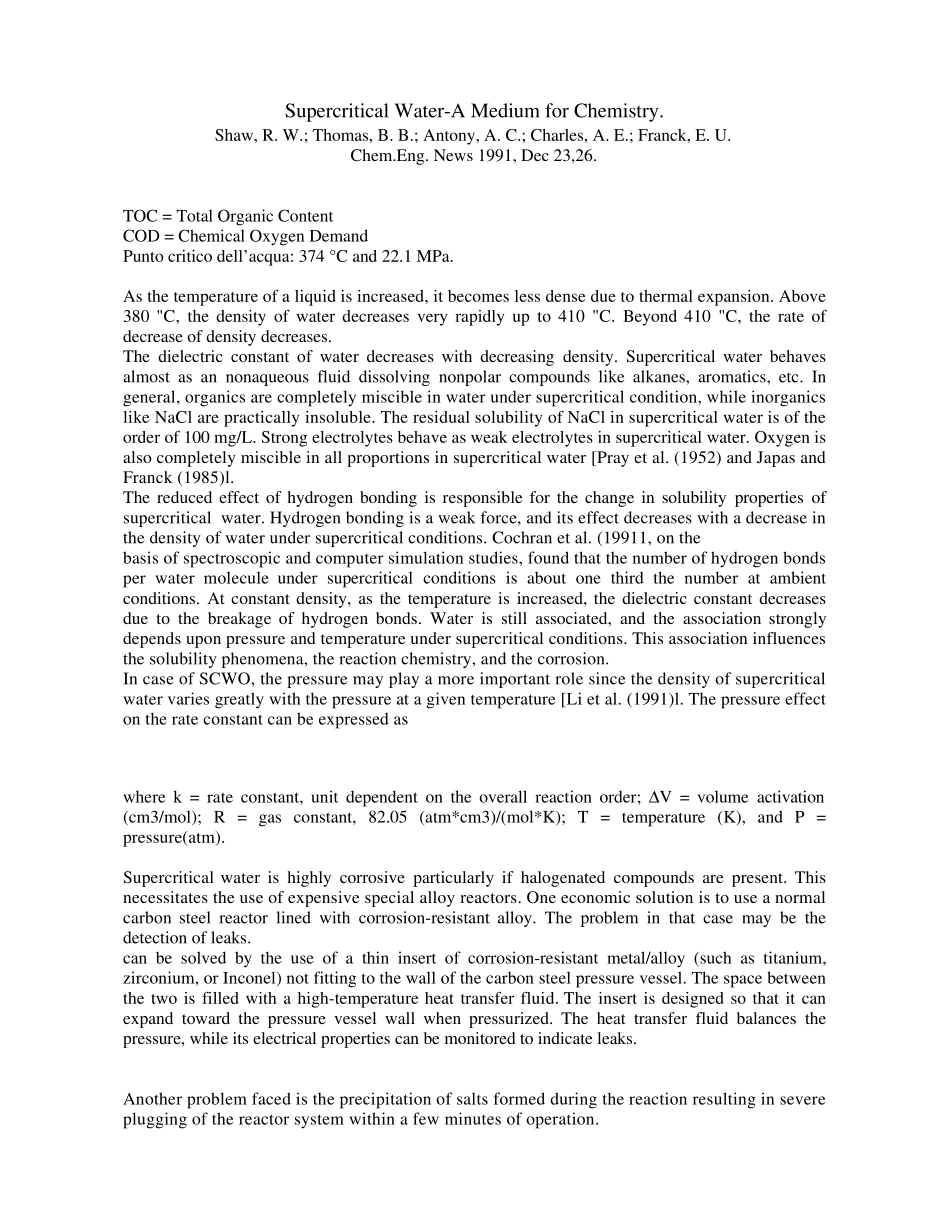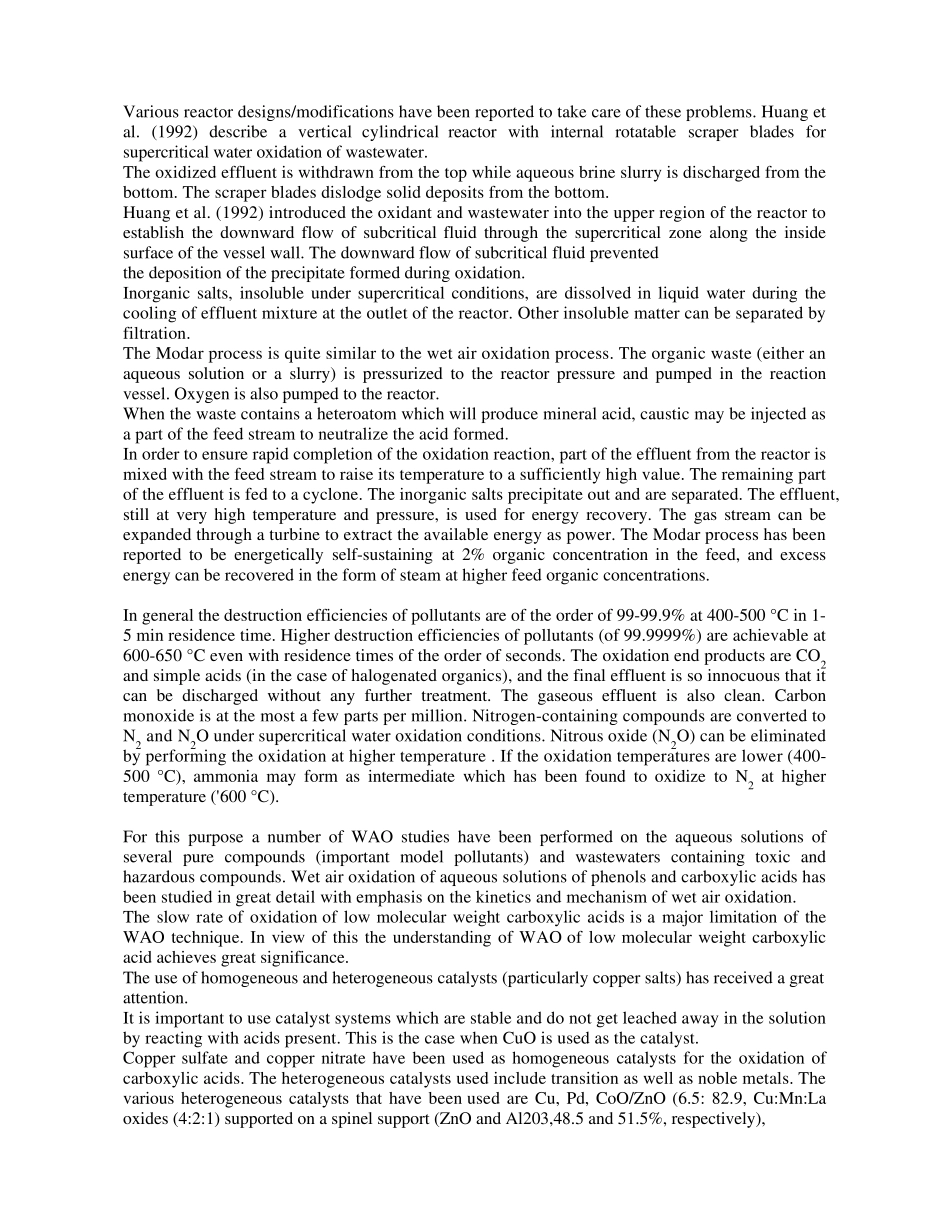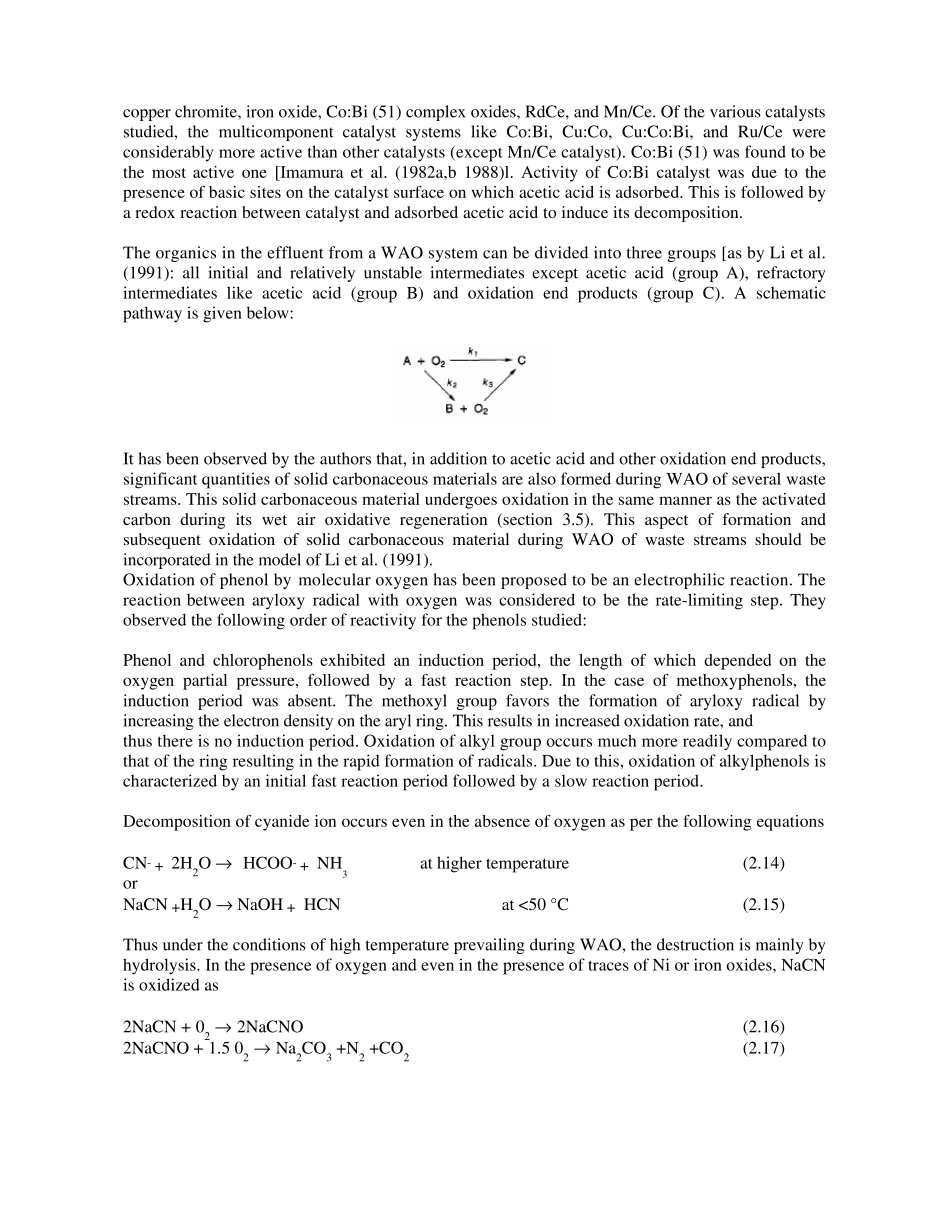Supercritical Water-A Medium for Chemistry. Shaw, R. W.; Thomas, B. B.; Antony, A. C.; Charles, A. E.; Franck, E. U. Chem.Eng. News 1991, Dec 23,26. TOC = Total Organic Content COD = Chemical Oxygen Demand Punto critico dell’acqua: 374 °C and 22.1 MPa. As the temperature of a liquid is increased, it becomes less dense due to thermal expansion. Above 380 "C, the density of water decreases very rapidly up to 410 "C. Beyond 410 "C, the rate of decrease of density decreases. The dielectric constant of water decreases with decreasing density. Supercritical water behaves almost as an nonaqueous fluid dissolving nonpolar compounds like alkanes, aromatics, etc. In general, organics are completely miscible in water under supercritical condition, while inorganics like NaCl are practically insoluble. The residual solubility of NaCl in supercritical water is of the order of 100 mg/L. Strong electrolytes behave as weak electrolytes in supercritical water. Oxygen is also completely miscible in all proportions in supercritical water [Pray et al. (1952) and Japas and Franck (1985)l. The reduced effect of hydrogen bonding is responsible for the change in solubility properties of supercritical water. Hydrogen bonding is a weak force, and its effect decreases with a decrease in the density of water under supercritical conditions. Cochran et al. (19911, on the basis of spectroscopic and computer simulation studies, found that the number of hydrogen bonds per water molecule under supercritical conditions is about one third the number at ambient conditions. At constant density, as the temperature is increased, the dielectric constant decreases due to the breakage of hydrogen bonds. Water is still associated, and the asso...


